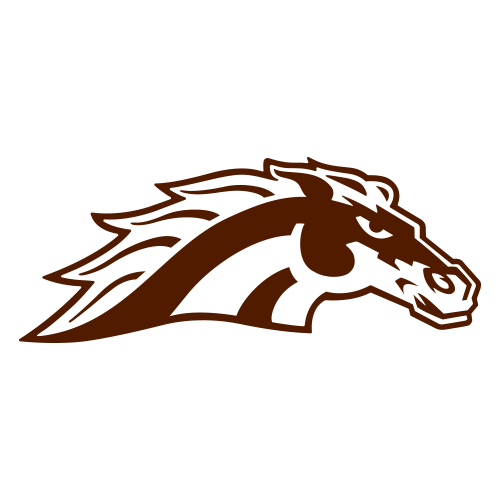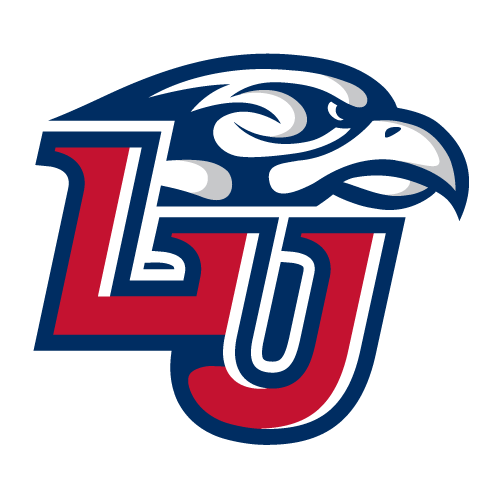




| HEIGHT | 6' 1 5/8" | HANDS | 9 5/8" |
| WEIGHT | 212 lbs | CONE | -- |
| 40 TIME | -- | BROAD | -- |
Corral is a shorter than ideally desired, small-frame QB whose 2020 and 2021 tape showed a twitchy athlete with a plus arm with the ability to effectively work all three levels of the defense, in addition to an active, mobile player who brought a playmaking dimension with his second-reaction running ability. Corral ran a highly schemed, tempo, high-percentage defined-one-read pass game with a strong emphasis on quick rhythm throws off play action/RPO acton, with little straight drop back pass until down and distance or game situation demanded it (tempo element regulated the defense and more often than not gave Corral a clean pre-snap read). Corral showed a quick, compact release and he consistently saw it fast and turned it loose with velocity on the defined one-read concepts that were the foundation of the Ole Miss pass game. What Corral needs to learn are full-field progression concepts that you can incorporate and integrate with the spread RPO and play action elements that he is most familiar and most comfortable with. His development at the next level will be a function of how quickly he can learn how to read it out from the pocket and how fast he can see it on pro pass game concepts. One thing is certain as you project and transition Corral to the NFL, and that is he will not be featured on designed runs the way he was at Ole Miss.

| HEIGHT | 6' 0 3/4" | HANDS | 9 1/4" |
| WEIGHT | 208 lbs | CONE | -- |
| 40 TIME | -- | BROAD | 111" |
Eleby was a fun QB to evaluate, especially on third down, when he was consistently effective working out of the pocket. When you watch his tape, you see a QB that does not check a lot of the boxes you ideally want in terms of physical traits and athleticism, but overall there was an efficiency to his game that showed up within the context of the Western Michigan passing game. Eleby is not as big and physical as you'd like, and his arm would be above average but nothing more by NFL standards, but he played with an excellent feel for the timing and rhythm of the WMU pass game, delivering with consistent ball placement and showing pocket poise and subtle movement when demanded. Eleby also showed a sense of progression reading in the dropback passing game, which was consistently evident on third down, when he was asked to take deeper drops and read it out depending on the route concepts/combinations. There were certainly areas in which Eleby must improve and weaknesses that must be addressed with coaching, but the more I watched his tape the more I thought Eleby has a chance to develop into a starting NFL QB with the right team, the right scheme, and the right coaching staff. Eleby must be in an offense with a run game foundation in which play action, RPO, and quick game concepts are foundational parts of the equation, but there is no question he can operate and execute the dropback passing game that demands progression reads and throws (we saw that on his Western Michigan tape). The traits and overall skill set are not high level, but in the right offense (with enough players around him), Elebt can execute an NFL offense as a ball distributor with enough mobility to run the designed boot game and make the occasional second-reaction play.

| HEIGHT | 6' 0 5/8" | HANDS | 9 1/8" |
| WEIGHT | 218 lbs | CONE | -- |
| 40 TIME | -- | BROAD | -- |
Howell will be an interesting evaluation as you project and transition him to the NFL. He is shorter than you ideally want, but he is solidly and compactly built with a strong frame and high level competitiveness. There is no question he possesses NFL traits with a strong arm that can drive the ball at the intermediate and deeper levels, and a running dimension that gives an offense both the designed QB run game and second-reaction movement plays. He was almost exclusively a pre-determined thrower in North Carolina's pass game and the issue with Howell is that he is not a naturally comfortable pocket QB with a refined sense of timing and rhythm within the structure of a detailed passing game. So the question becomes this: can he be taught that at the NFL level, or will he always be a higher-level traits player without the needed feel for playing the position from the pocket? The high percentage of Howell's timing and rhythm throws at North Carolina came on RPO concepts and bang play-action concepts and you cannot build an NFL passing game on solely that. Howell showed enough flashes as a pocket passer to get people excited, and he certainly has the arm talent demanded to succeed in the NFL, but much of his development will depend on coaching and scheme and his capacity to learn. There is something to work with from a traits standpoint, but can Howell become more refined, nuanced, detailed, and disciplined as a pocket QB? That's the question that must be answered. Howell cannot play in the NFL the same way he played at North Carolina with the strong emphasis on designed QB runs. He will need to develop and mature as a pocket QB to have any viable chance for meaningful success.

| HEIGHT | 6' 3 1/4" | HANDS | 8 1/2" |
| WEIGHT | 217 lbs | CONE | -- |
| 40 TIME | 4.73 | BROAD | 121" |
Pickett has an overall skill set and traits profile that projects and transitions well to the NFL QB position with his desirable combination of pocket efficiency and second-reaction movement. He has good size and played with a physical and mental toughness and competitiveness that consistently stood out. Pickett was efficient from the pocket with a profile that is demanded at the NFL level: he showed vision, progression reading (with full field reading concepts), timing, anticipation, and precise ball placement, plus the athleticism and mobility to be a second reaction playmaker; Pickett can be highly effective as an executor and ball distributor, and that's where his game starts. The Pittsburgh passing game featured multiple NFL route concepts which demanded progression reading and did not present the simple schemed throws that define most college passing games, and Pickett was clearly comfortable with this process. As you look to transition Pickett to the NFL, some areas to focus on will be his arm strength (more measured than live and loose, which will be a factor for some but not for others) and his tendency at times to perceive pressure and break the pocket unnecessarily, resulting in throws left on the field (his second-reaction ability can at times compensate for that). My sense is Pickett will have to work through disguised coverages and late defensive movement at the next level, but all rookie QBs face that hurdle.

| HEIGHT | 6' 3 3/8" | HANDS | 10" |
| WEIGHT | 211 lbs | CONE | -- |
| 40 TIME | 4.52 | BROAD | 127" |
Ridder fits the old Bill Parcells QB commandments profile of being at least a three-year starter and having won more than 23 games at the college level. I have studied Ridder in each of his last three seasons, and his 2021 tape showed an accomplished QB with the needed physical and athletic traits profile to develop into a quality NFL starter. Ridder has size, arm talent, and mobility, plus a natural sense of poise and composure to his play. While Ridder has an easy and effective mobility to his game and can make second-reaction runs with his smooth athletic ability, he did not look to leave the pocket until his throwing options were exhausted, and he rarely broke down in the pocket unnecessarily. Ridder was comfortable playing within the confines of the pocket and the structured pass game, and there were snaps in which he showed subtle and efficient pocket movement to slide away from pressure and make throws. My sense is Ridder is best suited to begin his career in an offense with a run game foundation in which play action and RPO concepts are meaningful parts of the equation, but there is no question Ridder can operate and execute the drop back passing game that demands progression reads and throws. The caveat is Ridder must become less erratic with his ball placement, because that is an issue that would derail his development.

| HEIGHT | 6' 3 3/8" | HANDS | 9 1/8" |
| WEIGHT | 226 lbs | CONE | -- |
| 40 TIME | -- | BROAD | -- |
Strong in most ways projects and transitions to the NFL as more of an old-school pocket QB whose game is built on beating you from the pocket without any significant or game-changing second-reaction movement ability. For Strong to succeed as a quality NFL starter, he must master the nuances, subtleties, and disciplines of the position, with heavy emphasis on working out of muddied pockets and throwing with precise ball placement consistently. Strong showed an aggressive throwing mentality with the physical traits to make stick throws into tight windows with velocity, and his 2021 tape showed some excellent vertical throws with the needed touch and ball placement. My sense is Strong will need to learn to play under center with the conventional play action pass game given that he does not have the movement traits to work almost exclusively out of the shotgun. Strong can absolutely make NFL throws at the intermediate and deeper levels, and there were some throws that were special, so the question becomes the balance between his pocket throwing ability (higher level) and his lack of movement traits, both in and outside the pocket. Strong must be protected well and consistently, and he must learn to master the pre-snap phase to have any meaningful chance for success at the next level.

| HEIGHT | 6' 0 1/2" | HANDS | 9 1/2" |
| WEIGHT | 219 lbs | CONE | -- |
| 40 TIME | -- | BROAD | -- |
As you project and transition Willis to the next level, he begins as an arm-strength and athletic dual-threat playmaking QB with a relatively steep learning curve as it relates to the NFL pass-game concepts and the reading progressions versus specific coverages that define the throws from those concepts and combinations. Willis was not asked to be a higher-level progression reader or to have a detailed understanding of coverages and coverage rotation, so that must be learned in the NFL and that will take time. A bigger concern will be his ability to see the field and make throws that are there, as he had too many clean throws left on the field at Liberty. The question is whether his run game dimension -- both designed and second-reaction -- can compensate for and camouflage his deficiencies and limitations early in his career, or is he a significant work in progress (my guess is different coaches will have different points of view on that subject)? One thing that did stand out on film was Willis' ability to make special second-reaction throws and runs, and that trait has become seen by some as a necessity in today's NFL/ It will be fascinating to see what team drafts Willis and how they structure their offense given the running dimension he provides. Willis comes into the NFL as a better pure thrower of the football than Lamar Jackson or Jalen Hurts. Some could see and evaluate Willis similarly to Trey Lance coming out of NDSU given his skill set and traits, but Lance is a much bigger man and played in a more detailed college offense. It's raw talent versus refinement/nuance/discipline -- that's the paradigm.

| HEIGHT | 6' 0 1/2" | HANDS | 9 3/4" |
| WEIGHT | 215 lbs | CONE | -- |
| 40 TIME | 4.88 | BROAD | 109" |
Zappe ran a high-volume passing game at Western Kentucky that featured a good percentage of schemed, manufactured, one read/no read throws, but he also showed the ability to work progressions and make throws that demanded higher-level timing. Zappe had outstanding command of the WKU offense, with a detailed and nuanced feel for the route concepts and the timing demanded to make all the throws, and what consistently stood out was his decisiveness and aggressiveness in turning it loose. The flip side of Zappe's 2021 tape was that you saw very few throws in which he had work late in the down out of contested and muddied pockets, and all NFL quarterbacks must be able to do that to have any chance for success. Zappe was an interesting 3rd-down study in that there were too many times he broke down in the pocket when there was no pressure, and other times he moved efficiently making second-reaction throws. What showed up with Zappe throughout his tape was his aggressiveness as a thrower (especially attacking one-on-ones outside the numbers) despite lacking the velocity to drive the ball, and for the most part that is a positive as he looks to make his transition to the next level. Zappe will have some significant challenges given the schematic nature of the pass game he ran at WKU and the high-percentage timing throws he made to open receivers in what was essentially pitch-and-catch. Zappe falls into the discussion with Colt McCoy, Case Keenum, and Taylor Heinicke as you project him to the NFL.